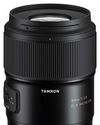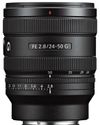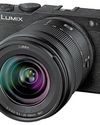
Is it necessary to set the ‘correct’ WB? What happens if we set a wrong WB for the scene we are photographing? Let’s try and answer these questions.
Let us say that you are photographing a person who is wearing white clothes and you are photographing the subject under yellow coloured light. Will his white clothes remain white? No. His white clothes will appear yellowish (unless you have adjusted the WB). We say that the subject has a ‘yellow colour cast’.
Similarly, as an experiment, you light up one side of a subject’s face with blue light and the other side of the face, with red coloured light. The face will exhibit one side as blue and the other as red. These experiments tell us that whatever is the colour of the source of light, will be the colour in the photo. If you photograph the Taj Mahal in the late evening hours, the white Taj Mahal will appear yellowish. So the question is, do you want to show what your eyes saw when you took the photo (yellowish Taj), or do you want to show the actual (white) colour of the Taj? If you prefer the later (original colour), then you would have to remove the yellow from the Taj. This is exactly what White Balance does.
So we can sum it up this way: White Balance is the correction applied to make a scene appear to have been shot in neutral coloured light even though the original scene was shot in coloured light.
Digital cameras offer a choice of various WB settings: Auto, Daylight, Cloudy, Shade, Incandescent, Fluorescent, Flash, and Choose Colour Temperature (the naming can vary with different camera manufacturers).
So far so good.
Denne historien er fra March 2024-utgaven av Smart Photography.
Start din 7-dagers gratis prøveperiode på Magzter GOLD for å få tilgang til tusenvis av utvalgte premiumhistorier og 9000+ magasiner og aviser.
Allerede abonnent ? Logg på
Denne historien er fra March 2024-utgaven av Smart Photography.
Start din 7-dagers gratis prøveperiode på Magzter GOLD for å få tilgang til tusenvis av utvalgte premiumhistorier og 9000+ magasiner og aviser.
Allerede abonnent? Logg på

AIPTIA CEIF Expo 2025 Wraps Up as a Landmark Event in New Delhi
CEIF Expo 2025, organized by the All India Photo Trade & Imaging Association (AIPTIA), was held from January 9 to 11 at Pragati Maidan, New Delhi.

Super Sharp
The Tamron 90 mm F/2.8 Di III Macro VXD lens (Model F072), compatible with Sony E-mount and Nikon Z-mount full frame cameras was launched worldwide on October 24, 2024.

Capturing the Essence of Nature in a Photobook
Ashok Kandimalla, a passionate photographer and an engineer, captures Kenya's landscapes and wildlife in his photobook, Postcards from Kenya. By carefully selecting images and telling a compelling story, Ashok emphasizes the enduring value of print over digital formats. This project marks the beginning of his journey in photobooks.

Mumbai Design Xpress (MDX '24): A Celebration of Colour and Creativity
Pantone's Mocha Mousse debuted in India at the third edition of Mumbai's very own Design Festival the Mumbai Design Xpress a.k.a MDX '24, where Mumbai's design community celebrated colour's transformative power through panel discussions, workshops, and performances.

Vivo X200
The VIVO X200 represents a significant step forward in smartphone design and photography capabilities, offering users a compelling package that combines style with substance.

Manish Gupta, Head of Product Lifecycle Management and Planning Division, Konica Minolta, India
At CEIF 2025, we highlighted our prime flagship products: the Accurio Press C84hc/C74hc with revolutionary high-chroma technology, the Accurio Shine 3600 with inline Foil for premium finishing, and our high-performance AccurioPress C12000 and C7100 series.

Small but Versatile
The Nikon Z50 Mark II, successor to the Z50, was introduced in India on November 7, 2024, four years after the launch of the Z50.

Another Good One from Sony!
Sony is the leader as far as mirrorless lenses are concerned and has over 70 lenses in its arsenal.

Conversation with Vivek Handoo
Vice President & Head of APAC & MD Australia - OM Digital Solutions Corporation At CEIF 2025 (Consumer Electronic Imaging Fair)

SELECTING THE RIGHT SYSTEM
Buying a new mirrorless camera can be a daunting decision. Not only are cameras very expensive, but also choosing a brand with an exclusive mount can mean locking yourself into a system.